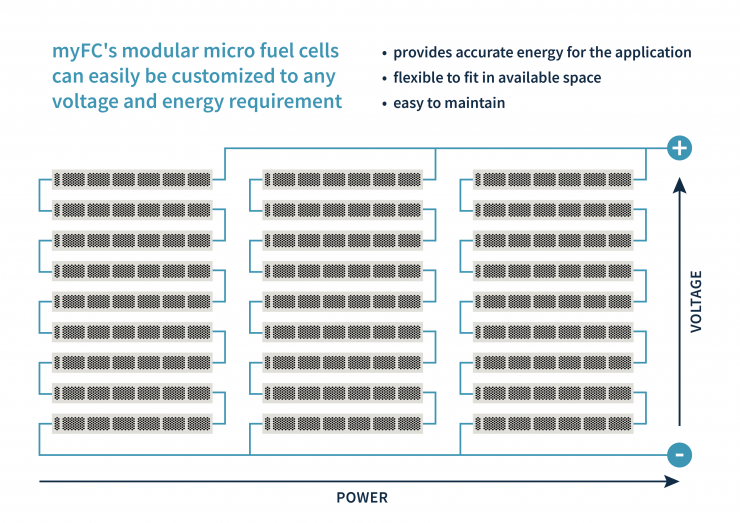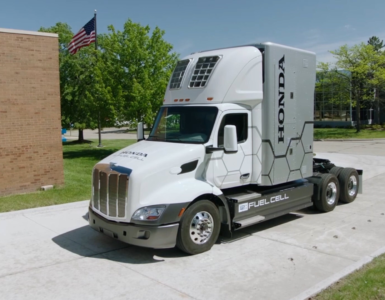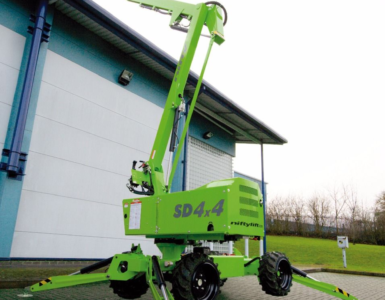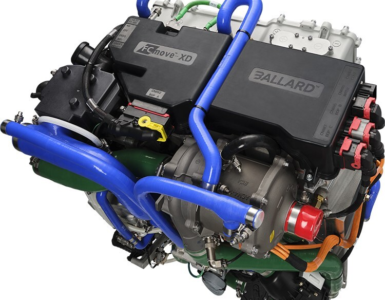myFC Lab Story: Modules with micro fuel cells – easy to configure according to the application.
myFC Lab Stories is non-regulatory information from myFC’s laboratory. The texts reflect the work that the company’s researchers and developers carry out in the development of the patented technology. The numbers and data in this text are not to be considered as a forecast for future revenues.
One of myFC’s patents, a hybrid system of both fuel cells and batteries, enables tailormade systems that meet exactly the voltage and power requirements that apply to a specific product.
Sebastian Weber, CTO at myFC.
🔥 What about we co-host a webinar? Let's educate, captivate, and convert the hydrogen economy!
Hydrogen Central is the global go-to online magazine for the hydrogen economy, we can help you host impactful webinars that become a global reference on your topic and are an evergreen source of leads. Click here to request more details
You can connect the fuel cells in the same way as you set up ordinary batteries, in series or in parallel to find exactly the right level for the applications.
Compared to standard stacked fuel cells, myFC’s micro fuel cells are very easy to configure to exactly the right specification.
Where stacked fuel cells are arranged like a monolith, with common electronics, myFC’s solution is easily put together via modular building blocks of fuel cells.
In a comparison, stacked fuel cells are a set of larger blocks, while the micro fuel cells are made up of smaller and more flexible modules, and when more powerful units are needed, the modules are easily connected to each other.
This means that it is possible to get exactly the right effect for a given application. This also means that you don’t generate any costs for overperformance.
The solution provides great flexibility, and the possibilities of fitting into a given space are greater compared to stacked fuel cells.
Another advantage with myFC’s patented technology with micro fuel cells concerns maintenance.
“If one of the fuel cell modules performs less well, the system can identify it.Then it is possible to replace only the specific fuel cell module, you do not need to replace the entire system. In such a situation, it is also possible to switch to a newer and improved version with upgraded features”, says SebastianWeber.
Ina typical operation of, for example, a self-propelled warehouse robot, it is possible to connect the robot’s lithium-ion battery to fuel cells which receive their fuel from a hydrogen tank which is quickly filled. This gives a significantly increased uptime, up to 99.5 percent.
“If you keep the batteries constantly charged at the right level with the help of fuel cells, you also extend their life significantly.” Thanks for staying up to date with Hydrogen Central.
Using supercapacitors as accumulators is another option, and a good match with fuel cells as they are well suited for handling high temporary loads and charges, for example when braking energy is recovered.
Also, the fuel cells are not exposed to wear in the same way as batteries and have a very long life if used with the appropriate control logic. In addition, the operation can be made completely green and sustainable – the only waste product of the fuel cells is clean water.
myFC Lab Story: Modules with micro fuel cells – easy to configure according to the application, January 12, 2022








